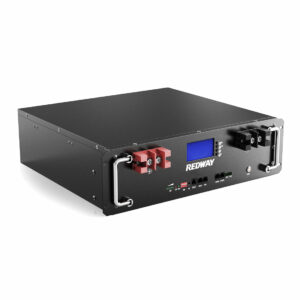How To Maintain Lead-Acid Batteries In Data Centers?
Lead-acid battery maintenance in data centers requires monthly voltage checks (2.25-2.27V/cell for flooded), temperature control (20-25°C ideal), and quarterly equalization charging. Clean terminals to prevent corrosion, use distilled water for flooded types, and replace batteries showing ≥20% capacity loss.
What Determines Telecom Battery Weight?
How often should data centers inspect lead-acid batteries?
Visual inspections must occur weekly, checking for leaks/swelling. Perform voltage tests monthly and load testing annually. For flooded batteries, verify electrolyte levels bi-weekly. Data centers with VRLA batteries can reduce water checks but still need quarterly terminal cleaning.
Beyond visual checks, data center operators should prioritize state-of-charge (SOC) verification using precision voltmeters. A 12V flooded battery at rest should read 12.6V (100% SOC) – deviations beyond ±0.3V signal trouble. Pro tip: Use temperature-compensated charging – increase voltage by 3mV/°C below 25°C to prevent undercharging in cold server rooms. Imagine batteries as marathon runners: consistent hydration (electrolyte levels) and check-ups (load tests) prevent collapse during critical outages. Why does load testing matter? Because a battery showing 12.4V at rest might plummet to 10V under 30% load if plates are sulfated. Always test at 50-80% rated CCA for 15 seconds to reveal true health.

What voltage parameters ensure safe operation?
Maintain float voltage between 2.25-2.27V/cell (13.5-13.6V for 12V). Equalize flooded batteries at 2.4-2.5V/cell every 3-6 months. Discharge never below 1.75V/cell (10.5V for 12V). VRLA batteries require tighter control – exceeding 2.3V/cell long-term accelerates grid corrosion.
| Parameter | Flooded | VRLA |
|---|---|---|
| Float Voltage | 2.25-2.27V/cell | 2.25-2.27V/cell |
| Equalization | 2.4-2.5V/cell | Not Recommended |
| Min Discharge | 1.75V/cell | 1.8V/cell |
Practically speaking, voltage settings depend on ambient temperature. For every 1°C above 25°C, reduce float voltage by 0.003V/cell – a 30°C server room needs 2.22V/cell instead of 2.25V. Ever wonder why batteries fail prematurely in top rack positions? Hot air rises, creating localized temperature gradients up to 8°C in tall racks. Install battery-mounted sensors rather than relying on room thermostats. Real-world example: A Chicago data center reduced replacements by 40% after implementing per-bank voltage regulation instead of uniform charging.
What Powers Cell Towers During Outages? Telecom Battery Essentials
How does temperature affect lead-acid battery lifespan?
Above 25°C (77°F), lifespan halves per 8-10°C rise. Below -20°C (-4°F), capacity drops 50%. Maintain 15-25°C for optimal performance. Use active cooling near UPS systems, and never install batteries directly under HVAC vents causing condensation.
In-depth: Chemical reactions accelerate exponentially with heat – a battery at 35°C ages twice as fast as one at 25°C. Pro tip: Deploy airflow management – align battery racks perpendicular to cold aisle airflow to prevent hotspots. Picture a chocolate bar in a pocket: just as body heat softens it, server exhaust warms batteries, causing plate oxidation. Why do some data centers still ignore thermal imaging? Annual IR scans of battery connections catch thermal runaway risks early. A Phoenix facility avoided fire by spotting a 65°C terminal connection during routine scanning.
When should equalization charging be performed?
Equalize flooded lead-acid every 3-6 months or when cells vary by >0.05V. Charge at 2.4-2.5V/cell until voltage stabilizes (4-12 hours). Never equalize VRLA unless specified – it causes water loss and pressure venting.
| Scenario | Action |
|---|---|
| Cell variance >0.05V | Immediate equalization |
| After deep discharge | Equalize within 24 hours |
| New installation | Equalize before commissioning |
Beyond voltage balancing, equalization dissolves hard sulfate crystals that form during partial charging. Think of it like descaling a coffee maker – periodic intense treatment prevents permanent damage. But how long is too long? Extended equalization (>24h) corrodes positive plates – use automated chargers that stop when current drops below 0.01C. A New York data center recovered 15% capacity by equalizing neglected batteries in 2-hour bursts over a week.
FAQs
How often should I check water levels in flooded batteries?
Inspect bi-weekly in first year, then monthly if consumption stabilizes. Use only distilled water – minerals in tap water accelerate corrosion.
Can AGM batteries be equalized like flooded?
Rarely – only with OEM-approved protocols. Most AGM specs forbid voltages above 2.35V/cell due to recombination limits.



